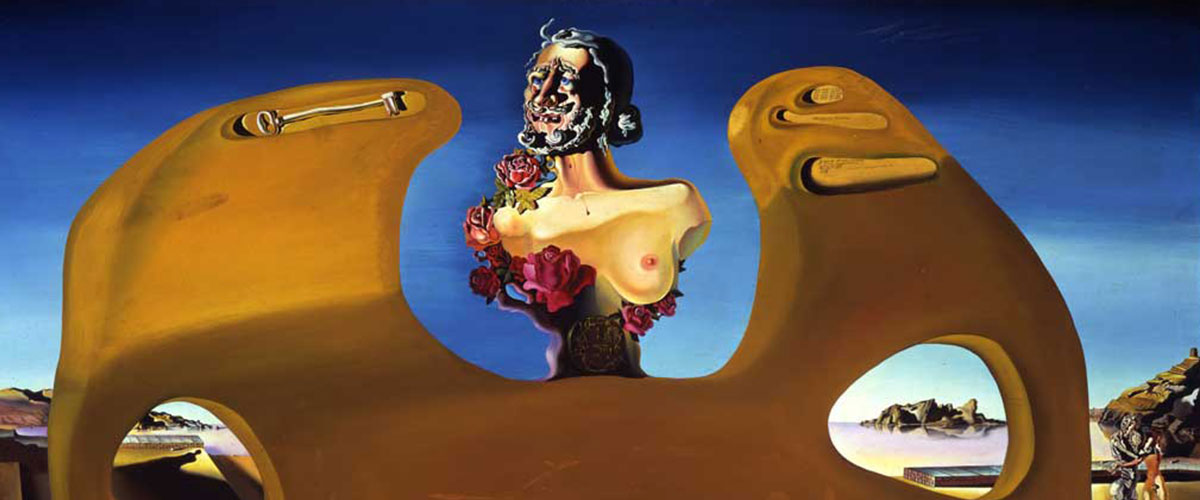Salvador Dalí’s interest in mythology developed from his readings of Sigmund Freud, who looked to the myths of the past in order to understand fundamental principles of the human psyche. After reading Freud, Dalí wrote that he was “seized with the real vice of self-interpretation, not only of my dreams but of everything that happened to me, however accidental it might seem at first glance.” Seeing how Freud drew on his knowledge of classical mythology in his psychoanalytic theories, Dalí constructed his own artistic identity by employing his understanding of these myths and symbols in his art and writing. In his autobiography, The Secret Life (1942), Dalí borrows from myth and legend to create a fantastic persona, employing familiar myths in order to recast his life, obsessions and neuroses. For Dali, these myths allowed him to make the personal appear universal, and they provided opportunities for powerful analogies. By alluding to mythic figures such as Oedipus and Narcissus, Dalí could exaggerate and recast his troubled relationship with his father and his tendency towards megalomania, bringing his personal battles to a universal stage.
Dalí embraced the idea of exploring personal mythmaking, moving from classical myths to new myths based on such unusual sources as the legend of William Tell or the Angelus painting by Jean-François Millet. Dali’s Memory of the Child-Woman (1931) brings together these two processes; it refers to the myth of Oedipus, which is an exemplar of a common rivalry between father and son. But the painting has a written reference to William Tell, the newer myth of the Swiss patriot and bowman who shot an apple off his son’s head. Dalí interpreted these legends as symbolic of paternal power and threat. In Archeological Reminiscence of Millet’s “Angelus” (1933-35), Dalí imagines a complex scenario of predatory female aggression. Both these myths transformed his own sexual anxieties and neuroses into universal themes.
Myth in Dali’s Art curated by Joan Kropf, Dalí Museum Curator of the Collection.
